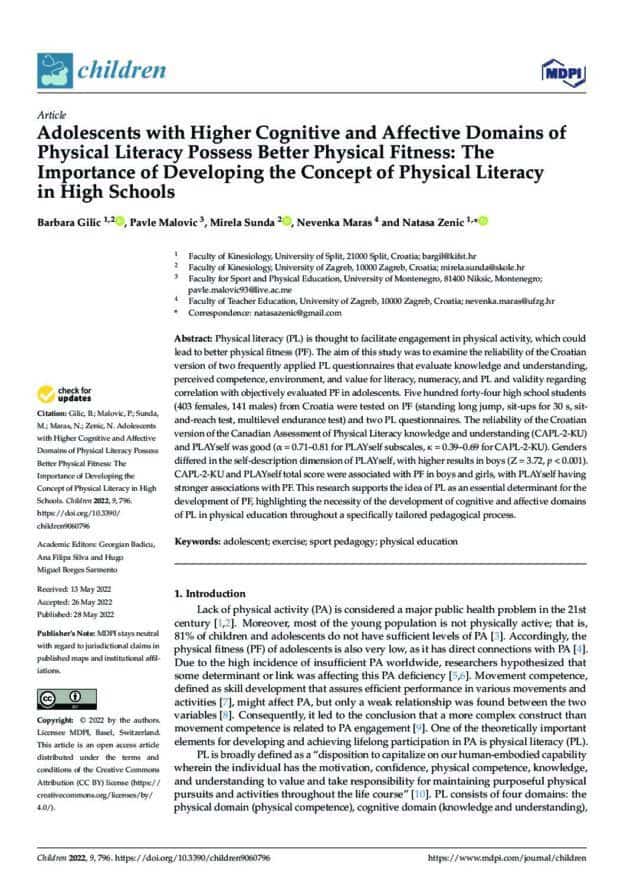Abstract
Physical literacy (PL) is thought to facilitate engagement in physical activity, which could lead to better physical fitness (PF). The aim of this study was to examine the reliability of the Croatian version of two frequently applied PL questionnaires that evaluate knowledge and understanding, perceived competence, environment, and value for literacy, numeracy, and PL and validity regarding correlation with objectively evaluated PF in adolescents. Five hundred forty-four high school students (403 females, 141 males) from Croatia were tested on PF (standing long jump, sit-ups for 30 s, sit-and-reach test, multilevel endurance test) and two PL questionnaires. The reliability of the Croatian version of the Canadian Assessment of Physical Literacy knowledge and understanding (CAPL-2-KU) and PLAYself was good (α = 0.71–0.81 for PLAYself subscales, κ = 0.39–0.69 for CAPL-2-KU). Genders differed in the self-description dimension of PLAYself, with higher results in boys (Z = 3.72, p < 0.001). CAPL-2-KU and PLAYself total score were associated with PF in boys and girls, with PLAYself having stronger associations with PF. This research supports the idea of PL as an essential determinant for the development of PF, highlighting the necessity of the development of cognitive and affective domains of PL in physical education throughout a specifically tailored pedagogical process.



Responses